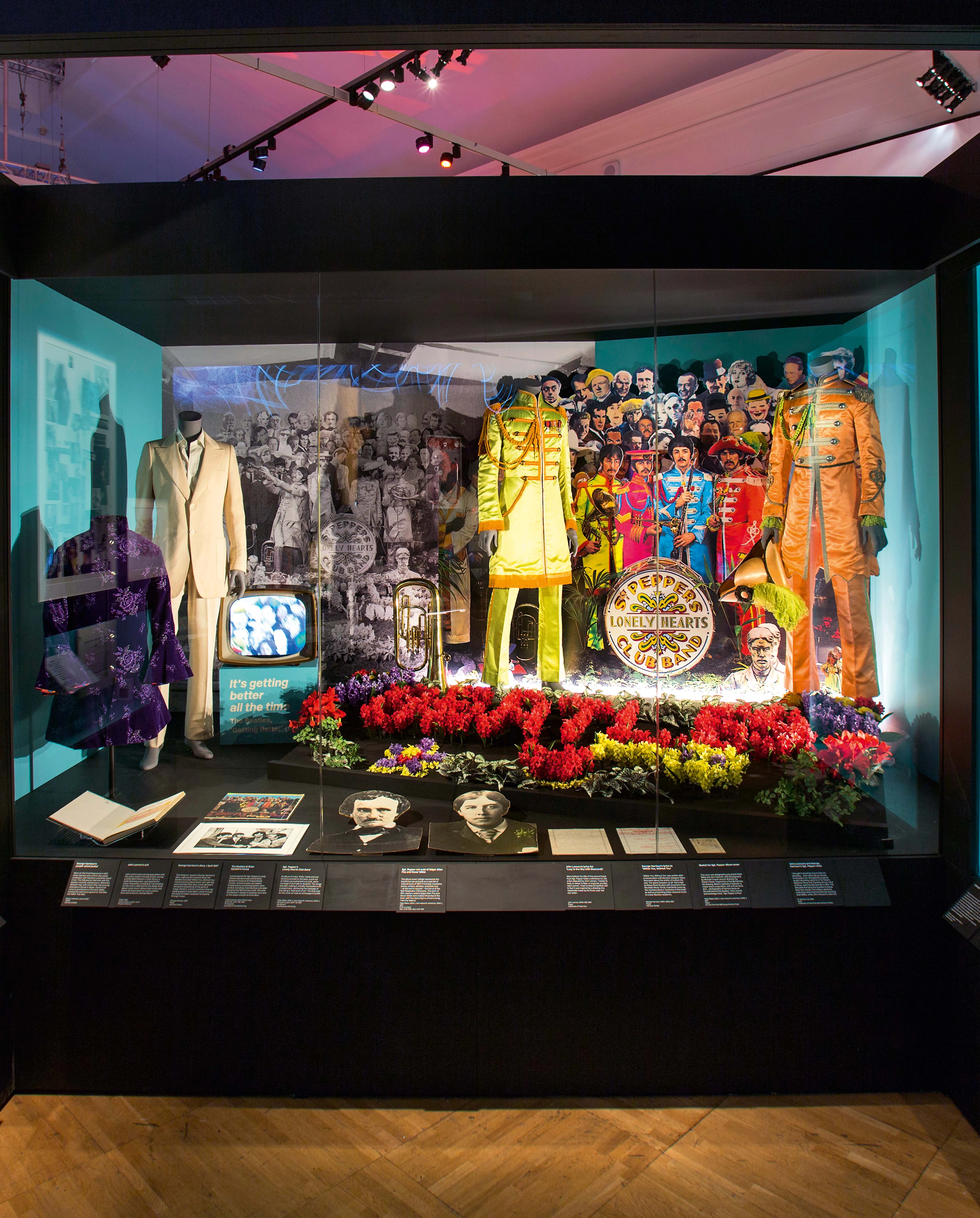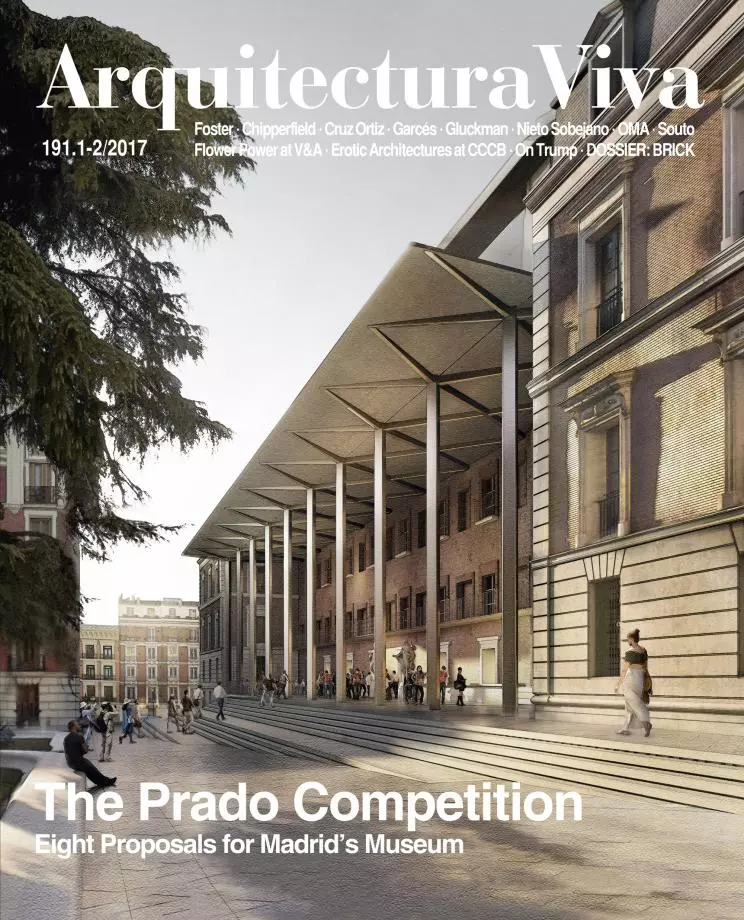
What we now call ‘the Sixties’ was actually the decade 1965-1975. Even at the time it was referred to as such by the young and actively engaged, in the confident anticipation it would prove pivotally transformational, an emancipatory watershed in cultural evolution. It was the product, particularly in America, of the unprecedented and broadly distributed affluence and tertiary education enjoyed by the large cohort of baby boomers, as well as of their resistance to the Vietnam War and the draft, the impact of drugs (LSD was legal until 1966) and their correlates in protest and psychedelic music.
London’s Victoria & Albert Museum has made this the subject of one of its series of exhibitions revisiting an era and/or movement. But it has chosen a narrow focus in time and subject matter: 1966-1970 and, as the subtitle says, ‘Records and Rebels’. There is also an emphasis on just two cities, London and San Francisco. Even then, so much is on show that it is rather indigestible, in part a product of too many exhibits that are somewhat similar (particularly record covers and funky outfits, many now decidedly tacky in aesthetic). On leaving, the impression is of a worthy attempt that inevitably leaves too much out and because of that is unsatisfyingly trivialising.
With good reason, the Sixties is often described as a period of sowing seeds that bore fruit only decades later. A common assumption of the Sixties was that you could take on a new set of behaviours, such as of communal harmony (‘Peace and Love, Brother’), without deep personal work and transformation. The shallowness of these assumptions would lead to the ‘human potential’ movement and forms of personally transformational work; these would eventually broaden and change profoundly psychotherapy and management theory, as well as the culture at large and its ethos as manifested in films, novels and television series. This psychological deepening has slowly, almost imperceptibly permeated our culture as one of the Sixties’ lasting legacies, unmentioned in the show and catalogue. Neglecting such long-term impacts robs the show of the topical interest it could have had, not least in relation to themes like sustainability.
Counterculture Cultures
The exhibition is organised around seven well-chosen and potentially fruitful themes, but all are frustratingly under-developed. ‘Revolution in Identity’ covered the impact of Swinging London (its fashions, style and look) and how global media spread this influence. Omitted, though, is the impact of encounter groups and the writings of Abraham Maslow, Norman O. Brown and Erik Erikson (whose Childhood and Society was polled the book most widely read by civil rights activists, after the Bible and Shakespeare). ‘Revolution in Ideas’ is similarly narrow, restricted to the purported selfdiscovery in drugs and new lifestyles, and focussed on music venues like the UFO Club in London and the Fillmore in San Francisco. ‘Revolution on the Street’ is about political protest, such as in Paris, in Prague, and outside the Pentagon. ‘Revolution in Consuming’ is restricted to giving some sense of the impact of ubiquitous advertising as well as of the international marketing exercises of two world fairs: the Expos of Montreal (1967) and Osaka (1970). ‘Revolution in Lives’ is largely about the exhibitionist communitarianism of music festivals like Woodstock in 1969. ‘Revolution in Communication’ covers such miscellany as San Francisco’s ‘Summer of Love’, the counterculture and the emergence of cyberculture. ‘Ongoing Revolution’ is another miscellany covering such things as the emergence of environmentalism, mass communications, Neo-Liberalism and personal computing. The latter, following something Steve Jobs said, is claimed to have been invented to supply the easy sense of communal connections that characterised the Sixties. But though the impact of personal computing is possibly the most profound legacy of the period, there is a difference between connecting online and the sensually embodied experience of connection enjoyed in the Sixties. It is this experiential dimension that is so desperately missing from this exhibition.
On entering, everybody is loaned headphones that play music relevant to the exhibit being viewed. But these snatches of music relate to the contemporary, atomised individualism and disruptively disembodied culture of iPods and channel hopping, very different to the drawn out, communally embodied, immersive experience of hanging out and being sensually engaged in the moment that characterised the Sixties, aided by drugs or not. But achieving that in our distractedly time-short culture that wants everything on hand, as if on Google, is impossible. The only room where some sense of this is glimpsed is the large one in which clips from the Woodstock movie are projected while people slouch on bean bags and some oldies sing along to the music.
Although the Sixties saw the widespread emergence of environmentalism and green design (Ian McHarg’s landmark Design with Nature appeared in 1969), any form of environmental design is barely featured. But what was the influence of the Sixties on environmental design? In interiors and product design the era is associated with eroticised furniture and fittings in shag pads of the time (featured in James Bond movies and Playboy), with plastic furniture by Joe Columbo or inflatables. John Lautner’s houses, which appear in Bond films, are also tainted with the sexist aspects of the Sixties, one of the dark sides of the era.
Briefly mentioned are Bucky Fuller and his dome, and Moshe Safdie’s Habitat, at the Montreal Expo. But looking at the buildings produced at the time – the heyday of macho Brutalism - it is difficult toF say that architecture was influenced by the benign flower power and communitarian aspects of the Sixties, with its leanings to oriental spirituality and mysticism, that are stressed in this show. There were the ‘self-builders’, part of the movement to self-sufficiency as promoted by Stewart Brand’s The Whole Earth Catalogue and more anarchic settlements like Drop City, and such books as Tom Bender’s The Environmental Design Primer (1973).
Some architects who exemplify Sixties ideals were from the West Coast, particularly the Bay Area, such as Sim van der Ryn. But he was originally from the Netherlands, and others who embodied this spirit were also Dutch (Aldo van Eyck, Herman Hertzberger), particularly in the communitarian and participative ethos of buildings like Centraal Beheer. Pondering such matters emphasises how much more exciting, topical and relevant an exhibition about the Sixties could be today than the one at the V&A.






